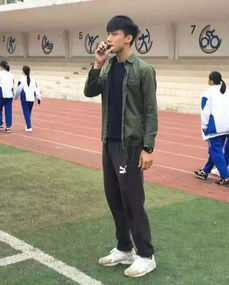Title: The Impact of Aging on Sports Performance and How to Adapt
Introduction
As individuals age, their bodies undergo various physiological changes that can affect their performance in sports and physical activities. While aging is inevitable, understanding its impact on sports performance and implementing appropriate adaptations can help individuals continue to engage in physical activities and maintain a healthy lifestyle.
Effects of Aging on Sports Performance
1.
Muscle Mass and Strength:
With age, there is a natural decline in muscle mass and strength, known as sarcopenia. This decrease in muscle mass can lead to reduced power and agility, impacting performance in activities that require strength and explosiveness, such as sprinting and jumping.
2.
Flexibility and Joint Mobility:
Aging also affects flexibility and joint mobility due to changes in connective tissue and joint structures. This can result in decreased range of motion, making movements more difficult and increasing the risk of injury, particularly in sports that require high levels of flexibility, such as gymnastics or martial arts.

3.
Cardiorespiratory Fitness:
The cardiovascular system undergoes changes with age, including a decrease in maximum heart rate and cardiac output. This can lead to reduced endurance and stamina, making it more challenging to sustain physical activity for extended periods, such as in longdistance running or cycling.
4.
Reaction Time and Coordination:
Aging can affect cognitive functions such as reaction time and coordination, which are essential for sports that require quick decisionmaking and precise movements, like tennis or basketball. Slower reaction times and decreased coordination can impact performance and increase the risk of errors or accidents.
5.
Recovery Time:
Older individuals may experience longer recovery times after intense physical activity or injuries due to slower tissue repair and regeneration processes. This can affect training schedules and overall performance in sports that require frequent or highintensity workouts.
Adapting to Aging in Sports
1.
Focus on Strength and Conditioning:
Incorporating regular strength training exercises into the fitness routine can help mitigate the loss of muscle mass and strength associated with aging. Resistance training exercises targeting major muscle groups can improve overall strength, power, and functional capacity, enhancing performance in various sports.
2.
Prioritize Flexibility and Mobility:
Engaging in stretching and mobility exercises can help maintain or improve flexibility and joint mobility, reducing the risk of injuries and enhancing movement quality. Incorporating activities such as yoga or Pilates into the training regimen can promote flexibility and balance, benefiting sports performance and overall wellbeing.
3.
Cardiovascular Training:
Including cardiovascular exercises such as brisk walking, cycling, or swimming can improve heart health and endurance capacity, allowing older individuals to sustain physical activity for longer durations. Interval training, which alternates between periods of highintensity exercise and recovery, can be particularly effective for improving cardiovascular fitness and metabolic health.
4.
Skill Development and Technique Refinement:
As individuals age, focusing on refining skills and techniques in their chosen sports can compensate for declines in physical attributes such as speed or strength. Practicing fundamental movements and drills can help maintain proficiency and efficiency in sports performance, maximizing capabilities within the constraints of aging.
5.
Rest and Recovery:
Adequate rest and recovery are crucial for older athletes to prevent overuse injuries and optimize training adaptations. Incorporating rest days into the training schedule, prioritizing quality sleep, and implementing recovery strategies such as foam rolling, massage, and proper nutrition can support overall recovery and performance longevity.
Conclusion
While aging presents challenges to sports performance, proactive measures such as strength training, flexibility exercises, cardiovascular training, skill development, and prioritizing recovery can help individuals adapt and continue to participate in physical activities at any age. By understanding the effects of aging on sports performance and implementing appropriate strategies, individuals can maintain a healthy and active lifestyle throughout their lives.
